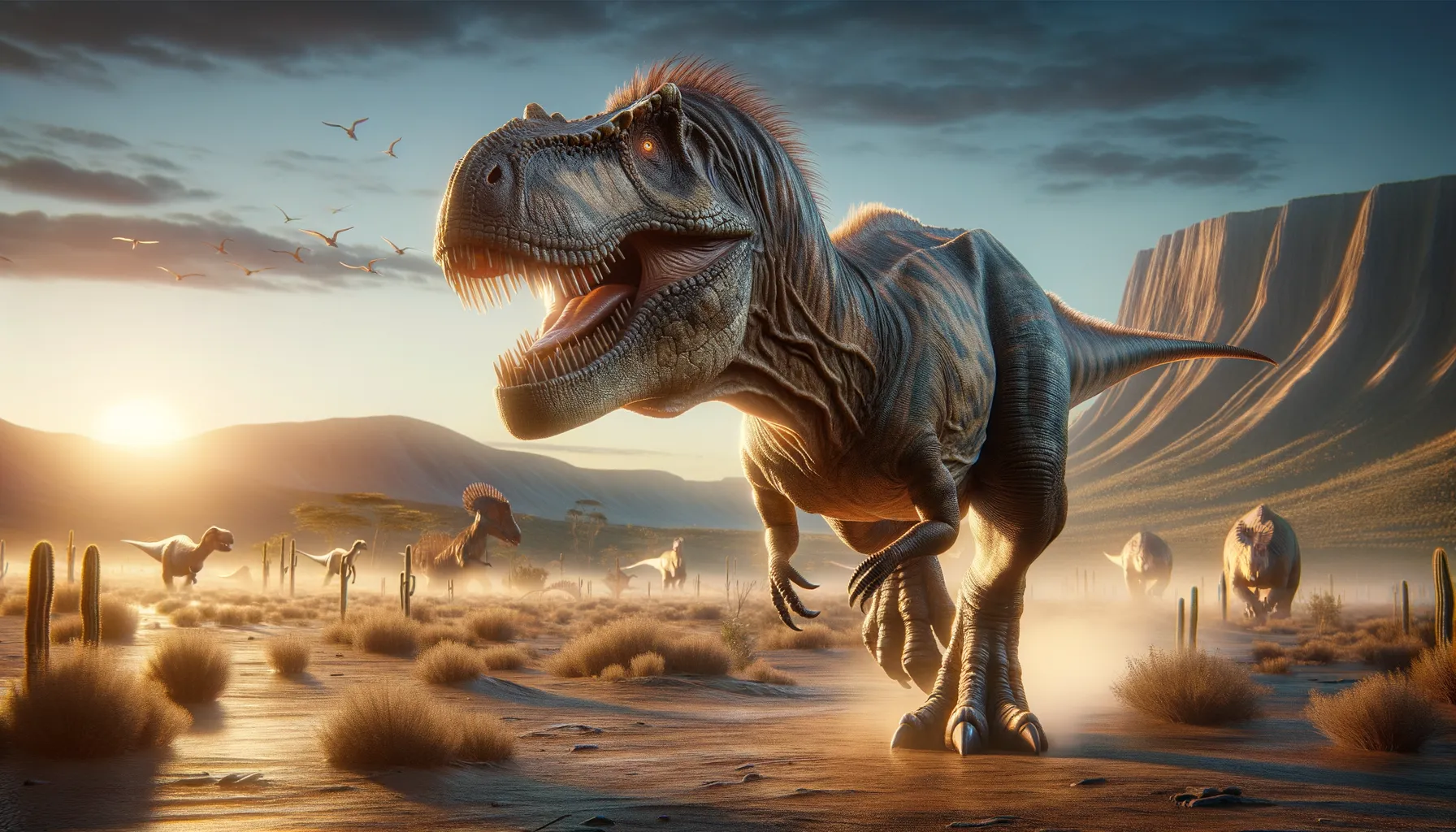
Xenotarsosaurus
The swift predator of ancient Argentina.
Period
Cretaceous
Length
Roughly 25 feet long.
Height
Around 10 feet tall.
Weight
Approximately 1 ton.
Xenotarsosaurus was a formidable carnivorous dinosaur that roamed Argentina during the Cretaceous period. With its powerful build and sharp teeth, it was a skilled predator that relied on speed and agility to catch its prey. The first of its kind was discovered in the region of Chubut. Its remains have offered valuable insights into the diversity of theropods in South America at the time.
Diet
Xenotarsosaurus was a carnivore, feeding on smaller dinosaurs and possibly scavenging. Its diet consisted primarily of herbivorous dinosaurs and other small to medium-sized vertebrates, which it caught using its speed and agility.
Hunting
This dinosaur likely used a combination of stealth and speed to surprise its prey. It might have hunted solo, allowing it to rely on stealth rather than cooperation to secure its meals.
Environmental challenges
Living in the dynamic environment of the South American continent, Xenotarsosaurus faced changes in climate and geography. Shifts in the landscape would have affected the availability of prey, compelling adaptations in hunting strategies. Periodic volcanic activity may have disrupted habitats, challenging its survival.
Speed
Moderately fast for a theropod.
Lifespan
Typically around 20 to 30 years.
First discovery
Discovered in Argentina in 1980.
Fun Facts
- Xenotarsosaurus was a theropod dinosaur that lived around 90 million years ago during the Late Cretaceous period.
- Its name means 'strange ankle lizard' because of the unique structure of its ankle bones.
- Xenotarsosaurus was discovered in Argentina, and its fossils were found in the Bajo Barreal Formation, an area known for its rich fossil deposits.
- This dinosaur is believed to have been a carnivore, likely preying on smaller dinosaurs and other animals of its time.
- While not much of its skeleton has been found, scientists estimate Xenotarsosaurus to have been around 5 to 6 meters (16 to 20 feet) in length.
- Xenotarsosaurus is part of the Abelisauridae family, a group of dinosaurs known for their short, stubby arms and robust skulls.
- Despite its fearsome appearance, it shared its environment with other intriguing prehistoric creatures, making its world a dynamic and complex ecosystem.
Growth and Development
Xenotarsosaurus hatched from eggs like many other dinosaurs, growing rapidly during its early years. This fast growth rate was vital for survival, reducing vulnerability to predators. Reaching full size within a few years, it developed the physical characteristics necessary for a life of hunting.
Habitat
The habitat of Xenotarsosaurus was likely varied, including wooded areas and open plains. These environments provided ample opportunities for hunting and foraging. Seasonal changes would have influenced the availability of resources, demanding strategic adaptation.
Interaction with other species
As a predator, Xenotarsosaurus would have interacted with numerous herbivorous species, fulfilling its role in the ecosystem. It may have had few natural predators once fully grown but possibly competed with other theropods. Such interactions were key to maintaining ecological balance.
Natural lifespan
It typically lived up to around 20 to 30 years.
Reproduction
Reproduction was likely through laying eggs, as evidenced by nesting sites found in similar theropods. Parental care might have been limited, with the young left to fend for themselves shortly after hatching. Clutches would have varied in size, depending largely on environmental conditions.
Social behaviour
Xenotarsosaurus might have been a solitary creature, like many theropods. Occasional interactions for mating purposes or territorial disputes would not have been uncommon. Herding or group hunting behavior is unlikely, given its physical attributes and ecological niche.
Fossil locations
Fossils have been primarily discovered in Patagonia, Argentina, providing essential knowledge of its physical characteristics and lifestyle. Additional finds could potentially be unearthed in other parts of South America. These discoveries underscore the continental range and diversity of theropods during the Cretaceous period.
